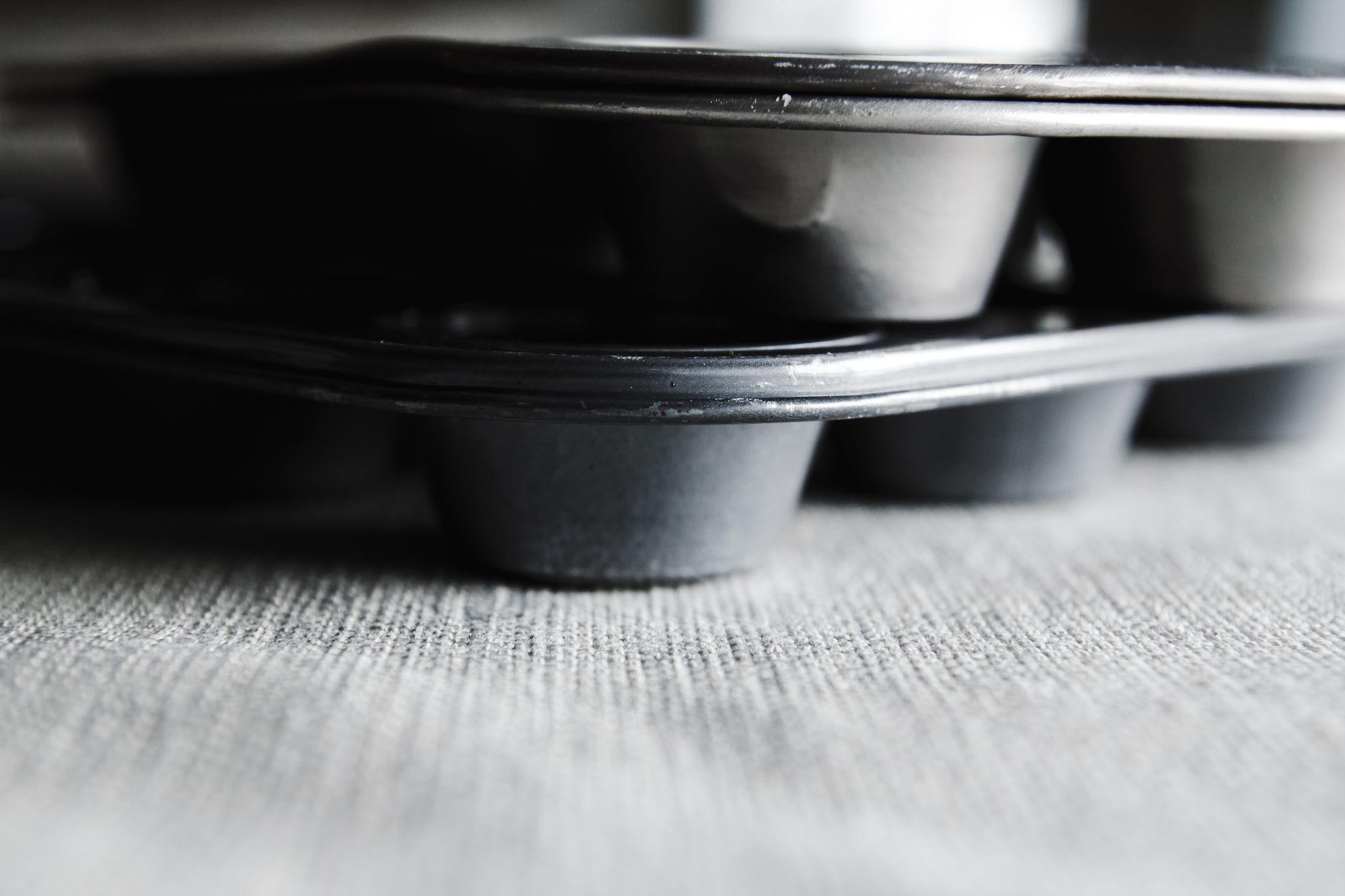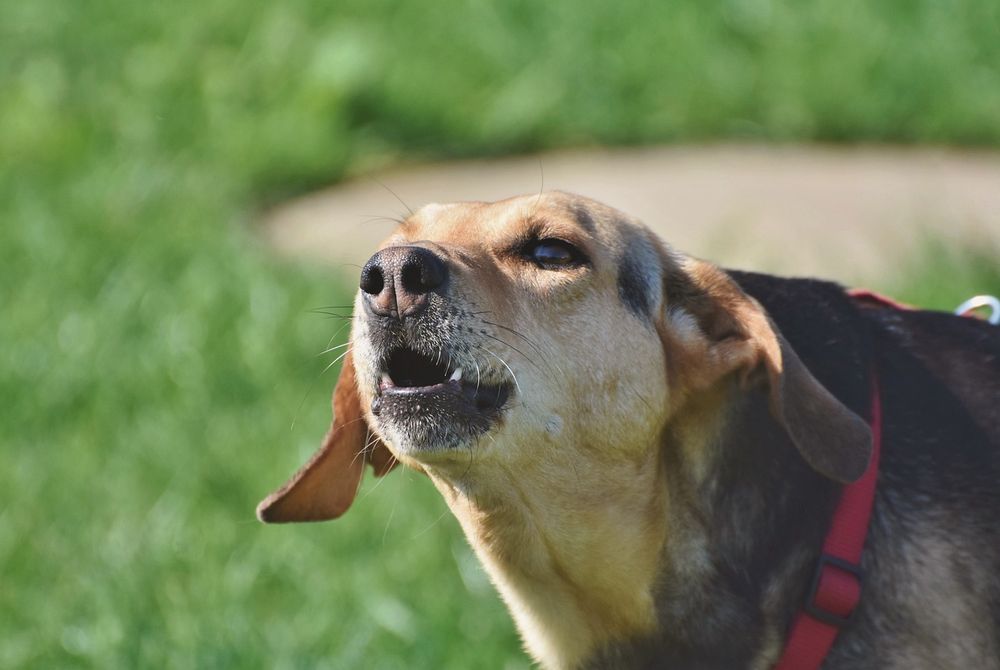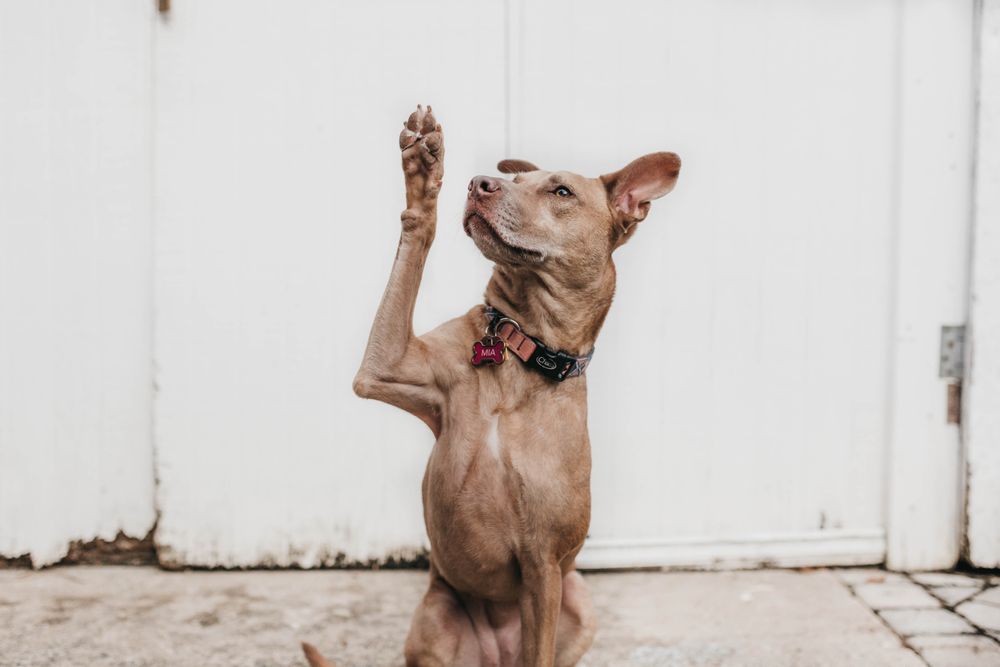Dogs are natural hunters and scavengers, and their wolf ancestors spent the majority of their waking hours trying to find food. Today, our dogs live relatively luxurious lives and are handed their daily meals. While it might seem nice that we give them this leisurely lifestyle, they are still animals with brains and bodies predisposed to problem solving and feeding themselves.
You can help your dog tap into their natural urge to problem solve by integrating mental enriching activities like the muffin tin game into your dog’s playtime routine. This article will explain:
- What is the muffin tin game
- How to play the muffin tin game
- The benefits of the game
- Frequently asked questions about enrichment activities
What is the muffin tin game?
The muffin tin game is a do-it-yourself (DIY) game that uses a muffin pan, kibble or small treats, and tennis balls to create a mentally enriching experience for your dog. The goal of the game is for your dog to use their sniffing and problem solving skills to find all of the kibble.
How to play the muffin tin game
To play the muffin tin game:
- Grab the necessary supplies. You’ll need a muffin tin, tennis balls, kibble or small treats. If there are 8 holes in your muffin tin, grab 8 tennis balls. You’ll cover each hole with a tennis ball.
- Set-up the game. Drop a treat or 1-3 pieces of kibble in each muffin hole, and cover each hole with a tennis ball.
- Place the muffin tin on the floor. Once all the muffin holes are covered, place the muffin tin on the floor, call your dog over and let them get to work finding their reward!
What are the benefits of the muffin tin game?
These are the benefits of playing the muffin tin game:
- Stress reduction. Sniffing, the core component of the muffin tin game, reduces stress and will help your pup relax.
- Mental enrichment. The task of removing each tennis ball and uncovering the reward below is a great way for your dog to use their problem solving skills and feel mentally stimulated.
- Fun. Your dog will enjoy the challenge, and you’ll definitely smile watching them try to figure out how to get the kibble or treat from the pan!

Frequently asked questions about teaching your dog enrichment activities
Do dogs like enrichment games?
Enrichment games give dogs the opportunity to express natural behaviors such as playing, chewing, scavenging, chasing and smelling. By offering your dog enrichment games, you are helping them live physically, mentally and emotionally satisfied lives. Dogs that don’t have access to mentally enriching activities tend to find enrichment elsewhere and engage in unwanted behaviors such as chewing shoes and digging up carpets.
How much enrichment does a dog need per day?
If you can give your dog a couple of enrichment activities each day, you will reduce boredom and decrease the likelihood that your dog develops behavioral issues such as unwanted chewing and barking. Easy ways to incorporate enrichment include feeding your dog with a work-to-eat toy such as a Fun feeder or Toppl, and practicing 10 minutes of dog training each day.
How do I keep my dog from getting bored in the house?
Boredom can lead to the destruction of your favorite slippers and other undesirable behavior like barking. By giving your dog a work-to-eat toy or bowl (i.e. a plaything that dispenses food when your dog interacts with it) you’re giving them the opportunity to expend mental energy and reduce the likelihood that they’ll feel bored and destroy your slippers.
A few work-to-eat bowls and toys we love include:
- Kibble balls. These are work-to-eat toys that your dog can nose around in order to get their food to fall out. They are usually best when used with dry food or dry treats. We recommend: The Twist-n-Treat and the Bob-A-Lot.
- Slow Food Bowls. These are usually plastic bowls that have little mazes or other obstacles in them designed to occupy dog tongues. We recommend: Outward Hound Slow Feeder.
- Puzzle Toys. Puzzle toys usually have little latches and drawers and pegs that must be manipulated in order to release yummy stuff, wet or dry. We recommend: the Brick Puzzle and Challenge Slider (more advanced).
- Activity Mats. Also known as “snuffle” mats, these can be used with dry food or treats. They’re kind of like rugs that your dog has permission to play with! We recommend: Sniff adn Snack Interactive Snuffle Mat and Wooly Snuffle.
- Toys you can stuff ‘stuff’ into. At Petcademy, we call these “Kong style” toys. Wet food or spreadable treats like soft cheese, peanut butter, or baby food, are easy to pair with a fun toy. In order to increase the time it takes your dog to get the good “stuff” out of the toy, you can try freezing the toy for a few hours once it’s been stuffed. In terms of toys, we recommend: the Kong and Toppl.




